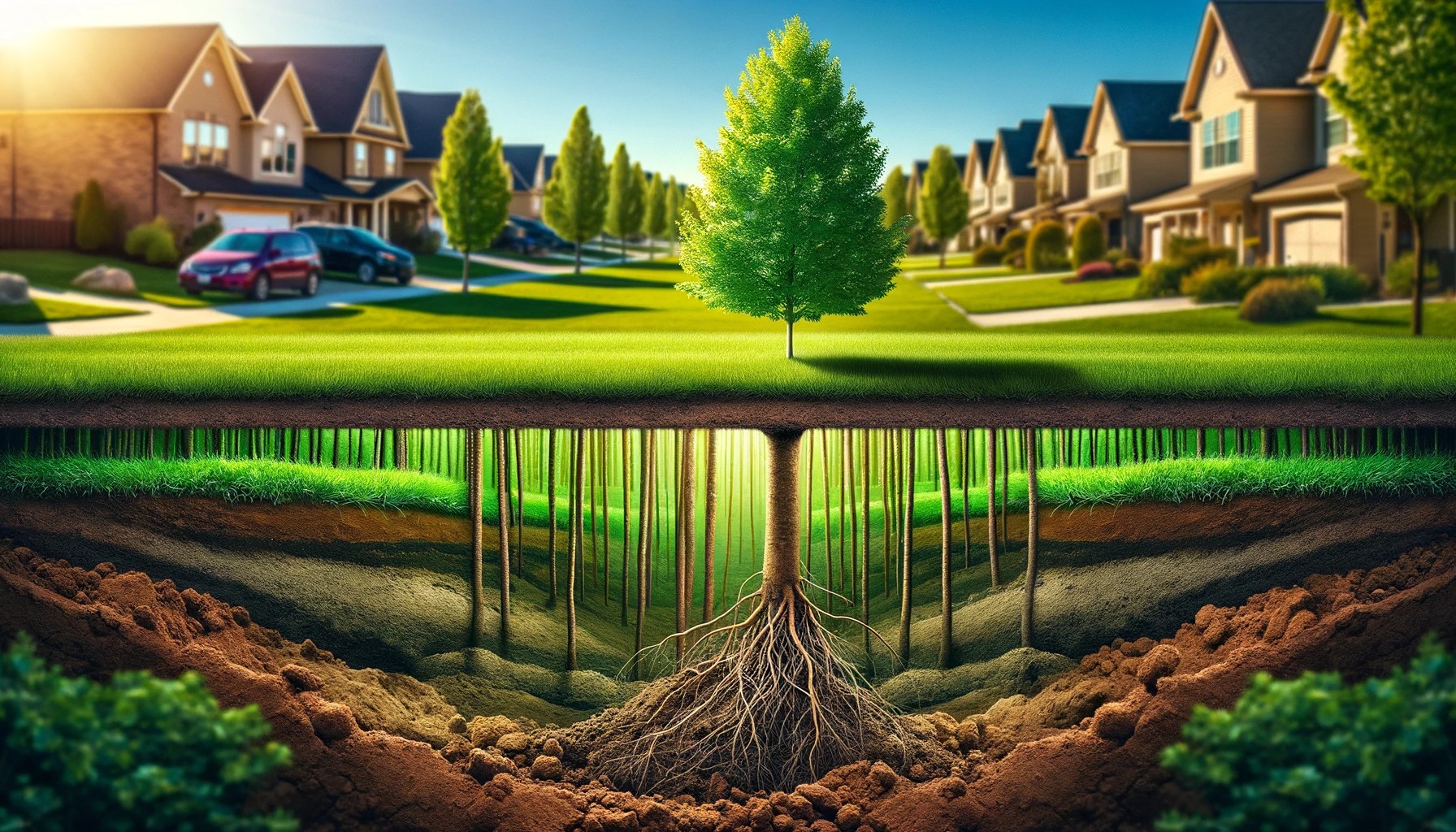OK, that's about enough about fertilizer for now, I think. Fertilizers are a tool; when you need the tool to do the job, then use it. Somewhere in all this is the idea that we need to be good stewards of our own land and community. The heavy use of fertilizers in North America in agriculture and urban environments has contributed greatly to the salinization of groundwater, streams, and rivers, and also vast tracts of farmland. Due to heavy irrigation practices coupled with the regular use of fertilizers, vast tracts of California farmland now sit sterile, too salty to grow crops—we are not far behind.
The same stewardship applies to the free use of other chemicals, fungicides, herbicides, and insecticides; we all need to be responsible for the overuse of these chemicals in what is becoming a more and more toxic world. It is better to dig or hoe weeds than spray, it is better to know that most insects are relatively harmless, and not to spray. There are always exceptions, but remember, “Any tree that gets the water it wants will be healthy, strong, have little deadwood, and will be able to defend itself”—defend itself from insects and diseases. You notice how healthy people stay healthy; it's the same with trees, all the trees need is the right amount of water.
So, we had approximately 15 inches of soil in the Calgary area, built up through thousands of years of annual plant growth and decay with the constant addition of sand, grit, dust, and tiny fragments of rocks, steadily brought by the wind. Our native soils are a bit sandy; this prairie soil is called loess. Underlying the topsoil or loam layer is the clay layer. Plants love the topsoil but are reluctant to grow much into the clay. Compared to loam, clay has very little nutrient and, as important, the soil particles that make clay soils are so small that the inner spaces between particles have very little room for air in the soil. These spaces between soil particles are called pores and are very important for the storage and movement of water and air in soils, two things plants have to have.
Roots are respiring organs; all life are respiring organisms, like yourself or a tree, or almost any other living thing. We burn sugar with oxygen, in the mitochondria in our cells, receive energy from it and produce CO2 as a waste product—respiration is the flip side of photosynthesis. So it is with your tree roots; they receive sugars from the green parts of the tree through complicated plumbing structures, the phloem, sugar, energy they need to grow and perform their essential functions of water and nutrient extraction from the soil. They avoid a solid layer of clay like the plague.
Now to the crucial aspect of growing trees in the city: all that wonderful soil I have described, the work of 15,000 years of prairie life, has all been removed from the city. The soil in your suburban lot is typically thin and poor, meaning we have a thin layer of mixed topsoil that is usually blended with lots of clay. Underlying this “loam” is a layer of solid clay, the native subsoil. Most Calgary urban soils are very sticky when wet—this is the first proof of their high clay content. Good loam, even when quite wet, is still somewhat crumbly.
Where did all our beautiful soil go? All the topsoil is removed from the land during the construction of a new neighbourhood. Many times this has to happen, due to the hilly terrain of many outlying Calgary neighbourhoods, to create a neighbourhood that works (minimum flooding); the new neighbourhood needs to be sculpted. Formed so that it drains well and no one gets a basement full of water during heavy rainstorms. Another reason for the removal of the loam is to sell it back to whoever needs it, almost always cut, or mixed with a good percentage of clay and other materials. Developers always use a thin layer of these poor soil mixtures, many times in a layer thin enough to create an inherent drought situation for the trees planted into it. In other words, the soil is poor enough and thin enough that during a hot spell, it only retains a useful amount of water for the trees for something like a period of two weeks. Water it, or receive a heavy rain, let two weeks of high 20-degree days go by, and the soil will again be dry. This is so important, so very important for you to know—as bad as things are, with “proper” watering you can still have healthy trees.
With the construction and development of new neighbourhoods, crucial topsoil is often removed, leaving behind thin, clay-rich layers ill-suited for healthy tree growth. However, with adequate and proper watering techniques, it's still possible to nurture and maintain healthy trees in urban environments.


